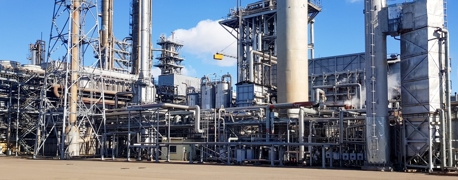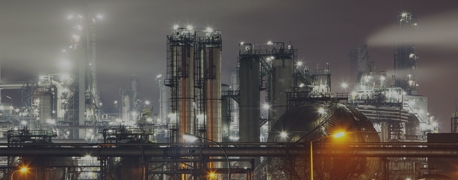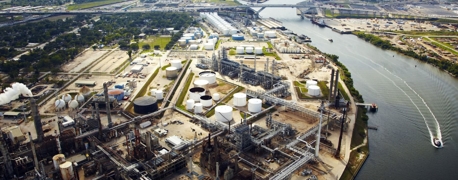5 Dangers of Popcorn Polymer at Chemical Plants

On the 27th of November 2019, a series of explosions ripped through the TPC Group Chemical Plant in Port Neches, Texas. Not only was this petrochemical plant severely damaged, but the explosions also rocked homes and other businesses in the neighborhood, triggering mandatory evacuations for everyone in a four-mile radius of the plant. While only those near the plant were evacuated, people up to 30 miles away reported feeling the blasts. Several workers and residents were injured by the pressure wave created by the explosions. When all was said and done, the explosions had inflicted $450 million worth of destruction to the plant, while causing an additional $153 million worth of off-site property damage.
What caused the explosion? Ultimately, it was the creation of popcorn polymer, which is an accidental byproduct of chemical processes that involve butadiene or ethylene. At this butadiene plant, popcorn polymer had formed in a dead leg, that is, a section of pipe that was still attached to pipes that are actively used in processing, but it isn’t part of the process itself. With no other material flowing through it, the unmonitored dead leg made for an open space that was prime for butadiene and oxygen to react, forming and growing popcorn polymer inside that dead leg. Over the course of about 114 days, this popcorn polymer built up inside until the pipe burst shortly after midnight. This released streams of butadiene, a seriously flammable chemical. The butadiene promptly ignited, leading to multiple explosions. The resulting fires burned for more than a month.
This incident proved how dangerous popcorn polymer can be, and also how easily chemical plants can fail to mitigate this danger, putting workers and the surrounding communities at risk.
What Is Popcorn Polymer?
While it can be the byproduct of other chemicals, popcorn polymer most often forms when butadiene reacts, often with oxygen, forming a porous and bubbly resin. It might even be yellow or brown, though its appearance can sometimes look more like white cauliflower. At other times, it will form needle-like, glassy crystals, while in other circumstances, it will be a clear gel. It grows faster around rusted iron, water, and some forms of peroxide, and in some cases, it doesn’t even need air to form. In many respects, popcorn polymer is a substance that we don’t fully understand, but we do know that once it starts forming, it grows very quickly. The larger it gets, the faster it builds up.
Why Is Popcorn Polymer So Dangerous?
1. Popcorn Polymer Is a Safety Risk to Chemical Plants & Equipment
Whatever form it takes, if it grows unchecked, popcorn polymer can form inside various tubes and machinery until it creates enough pressure to burst pipes, condenser shells, valves, and other metals. Popcorning can also plug up safety venting devices, letting dangerous fumes, dust, and vapor build up in plants that are full of ignition sources, greatly increasing the ever-present risk of industrial fires and explosions.
Popcorn polymer can’t be dissolved, won’t stick to metal, is very dense, and is the most dangerous type of polymer that can form from butadiene. It can also grow in any direction, threatening the structural integrity of anything it grows inside of or close to.
2. Popcorn Polymer Exists Because of Dangerous Chemicals
The types of chemical processes most likely to produce popcorn polymer are those that produce butadiene and ethylene, extremely flammable and toxic chemicals. While the good news is that popcorn polymer is nowhere near as flammable nor toxic as butadiene or ethylene, it still exists because of and around such volatile substances. Not only can popcorning destroy equipment and pipes, but doing so can also release scary amounts of butadiene or ethylene, exposing workers to harmful effects on the eyes, skin, lungs, brain, and nervous system, also putting them at even higher risk of occupational illnesses such as cancer (more on that later). If the damage is widespread enough, popcorn polymer can also release these chemicals among the surrounding public at large. The damage caused by popcorn polymer also exposes butadiene or ethylene to a number of ignition sources, putting workers and the surrounding environments at risk of explosions and fires.
3. Popcorn Polymer Is Difficult to Eliminate
It’s the company’s responsibility to prevent the formation of popcorn polymer, or failing that, to ensure its removal. Given the risk it poses to workers, management is legally responsible for preventing harm caused by popcorn polymer—which means they’re financially responsible when harm does occur.
The ways companies can prevent or mitigate the formation of popcorn polymer include:
- Preventing empty spaces/dead vapor spaces, like empty dead legs
- Keeping oxygen out of the production process, such as by venting to keep oxygen from building up
- Reducing peroxide used in production
- Using chemical inhibitors to inhibit popcorn polymer growth
- Not letting temperatures in certain areas exceed 200 degrees Fahrenheit
- Chipping and hydroblasting away popcorn polymer inside pipes
Companies must act swiftly at the first signs of popcorn polymer, using thorough removal methods such as hydroblasting, chipping, and high-pressure water cleaning to clear affected pipes and valves. Once the polymer has been removed, metal surfaces should undergo an acid treatment and be treated with hot sodium nitrite to address oxygen rust, with amines added as necessary. These procedures help ensure that even trace amounts of polymer are eliminated and cannot quickly re-form.
Although these steps can require taking equipment offline for an extended period—sometimes up to 20 days—such comprehensive measures are vital to restoring safe production conditions and preventing future incidents.
4. It’s a Danger That’s Not Going Away Anytime Soon
Why risk the creation of popcorn polymer? Because it’s a part of processes that we’ll continue to rely on for the foreseeable future.
This production gone wrong, or polymeric fouling, is most often seen in:
- Petrochemical plants, especially in:
- Ethylene cracking plants
- Butadiene processing
- Refining, especially in debutanizers (separates butane from natural gas)
Ethylene cracking involves turning the ethane from natural gas into ethylene, a building block for creating plastic, which of course, is a ubiquitous substance for our daily lives. Butane is used for various gasoline blends, whether for cigarette lighter fuel and portable stoves or as an aerosol propellant, refrigerant, and more.
Butadiene is used to make many products, especially synthetic rubber. In 2007, the global demand for butadiene was estimated to be 9 million metric tons, with that number reaching 14 million metric tons in 2024 and expected to only grow for years to come.
The synthetic rubber that butadiene is needed for producing:
- Tires
- O-rings
- Hoses
- Conveyor belts
- Golf ball cores
- Flooring
- Nylon
- Paints
- And so much more
Synthetic rubber is highly desirable because it’s more temperature-resistant, has better tear resistance, less odor, and doesn’t oxidize as readily as natural rubber does. There also isn’t enough natural rubber to meet demand.
Once butadiene is turned into synthetic rubber, it’s stable, so while it’s everywhere, it’s not everywhere in its dangerous, volatile form. That does mean, however, that butadiene needs to be continually produced in high volumes. And as long as plastic, butane, and especially synthetic rubber are part of the fabric of daily life, popcorn polymer is always a risk of fouling up the processes needed to produce these key products.
5. Popcorn Polymer Is a Risk at Plants That Already Endanger Communities
Just as butadiene and ethylene present health risks during the production of many daily items, popcorn polymer itself is only a threat when these substances are being produced. So where are butadiene and ethylene produced? Mainly in Texas and Louisiana, particularly the Texan Coast and Louisiana’s “cancer alley”, the region between Baton Rouge and New Orleans.
While these areas account for many of the 35 or so ethylene cracker plants around the U.S., such plants are also found in:
- Beaver, Pennsylvania
- Clinton, Iowa
- Grundy, Illinois
- Lake Charles, Louisiana
- Longview, Texas
- Marshall, Kentucky
Butadiene plants are mainly found in Texas. TPC is a leader in this industry, and it’s located in Port Neches and Houston, Texas, and Lake Charles, Louisiana.
As mentioned briefly before, butadiene and ethylene are considered carcinogenic, cancer-causing chemicals. These plants are already belching out copious amounts of dangerous chemicals that create numerous health risks, from skin conditions and trouble breathing to lymphoma, leukemia, and a whole list of other cancers. These chemicals are a couple among the dozens of other chemicals produced in plants that dot Texas’ Golden Triangle (an area more or less marked off by Beaumont, Port Arthur, and Orange) and surrounding areas as well as Louisiana’s Cancer Alley, which is so named because that region has some of the highest cancer rates in the entire nation. In this region as well as Texas’ Golden Triangle, about 1 in 5,000 people face an increasing risk of cancer throughout their lives, which is twice the upper limit set by the EPA as an “acceptable” risk of cancer.
In these mostly low-income, minority neighborhoods, the risk of exposure to toxic chemicals already runs rampant, and of course, a couple of these key chemicals can also quickly produce popcorn polymer. The damage created by unchecked popcorn polymer can release even higher concentrations of these toxic chemicals and send them throughout a wider area too, if fires and explosions result from popcorn polymer. An already dangerous workplace becomes that much more of an immediate safety threat to the workers who earn a living at these plants and reside near them, also threatening more acute exposure and safety risks to the rest of the community.
Popcorn polymer can make hazardous circumstances even more disastrous for tens of thousands of people in these two regions alone, not to mention the other communities with ethylene plants. Just as with other threats posed by these chemical plants, they often go underregulated.
Who Creates & Enforces Safety Policies for Popcorn Polymer?
Butadiene is also already a chemical of serious concern, according to the Chemical Safety Board (CSB), a federal agency that can do little more than make recommendations. Similarly, the American Chemistry Council provides guidance on how to safely work with and around butadiene, but even its policies don’t fully address dead legs in butadiene environments, nor do they specify when a shutdown for detecting and resolving popcorning would be justified. The ACC also doesn’t provide guidance on what to do when popcorn polymer is identified. Neither of these bodies can enforce anything either.
These agencies that specialize in chemical plant safety can advocate for policies for preventing popcorn polymer formation at butadiene, ethylene, and other chemical plants, but it’s up to other agencies like OSHA or the EPA to issue any citations or fines. And the areas where butadiene and ethylene, and thus popcorn polymer risks, are most present, are regions that are known for being underregulated and not having existing policies enforced.
When workers or locals are affected by the toxic exposure, fires, or plant explosions that can result from popcorn polymer that’s grown out of control, it’s often a failure of federal regulators, but it's especially a failure of the companies involved, negligent companies who have failed to provide a safe workplace by prioritizing speed and profit over thorough policies and adequate safety measures.


